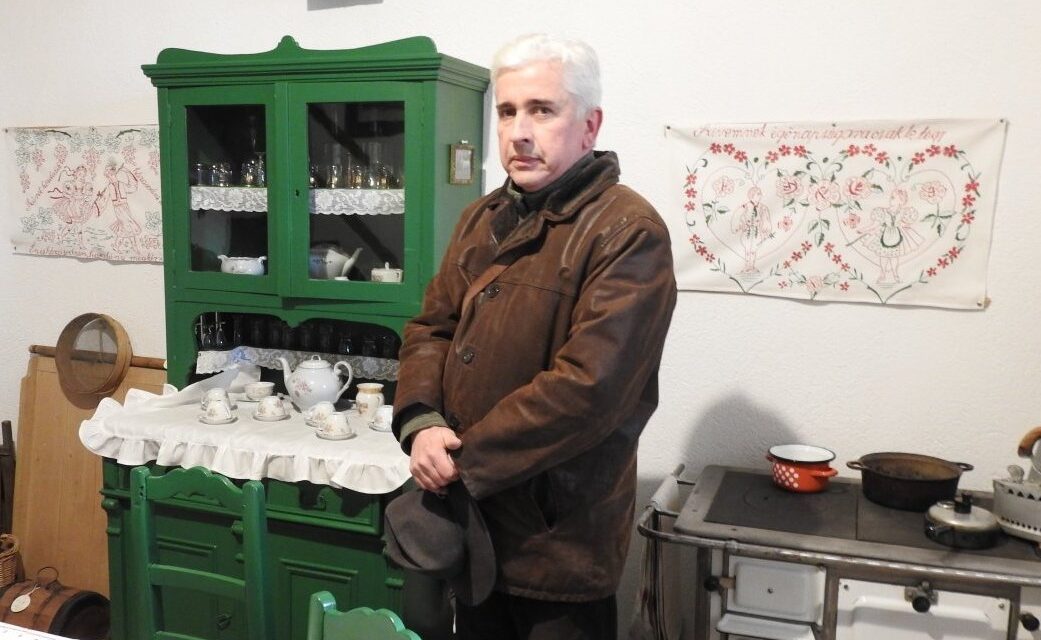In addition to the Hóstát museum operating in the tower of the Kétágú Reformed Church in Cluj-Napoca, the way of life, traditions, history and vegetable cultivation of the people of Hóstát, which is famous all over the world, would be presented in the framework of a traditional country house. József Bányai, a lawyer working on the idea Krónika that the new public collection will be an interesting highlight of the Hungarian heritage of the treasured city.
The Hóstáti Museum has been open to the public in Cluj-Napoca for more than ten years in the tower of the Kétágú church of the Lower Town Reformed congregation. The furnishings and material memories of the memorial rooms, inaugurated in the fall of 2012, remind of the 1949-1989 communist period of the treasured city's host community.
Starting from the 1970s, the communist government razed more and more houses, streets and parts of the city to the ground in order to replace them with apartment blocks for the majority population to be settled.
The public collection, which can be visited on Tuesdays and Thursdays between 10-12 and 16-18, can also be visited by groups at other times upon prior notice. In one of the rooms in the tower, the photos taken in the 1980s, which immortalized the demolition of the Hóstát gates, can be seen as part of a permanent exhibition. Knowing the conditions of the time, Károly Feleki was not a risk-free undertaking to capture the Hungarian-related devastation of the communist "city planning". The communist government deprived many families in Hóstát of their property, destroying the gardens that remained next to the houses, which ensured their livelihood after the forced co-operatives.
Traditional farming would also be presented in the open-air museum
As a native of Hóstát, lawyer József Bányai - the presbyter of the Reformed church in Alsóváros - also took part in the creation of the museum and the collection of memorabilia among the members of the Cluj-Napoca farming community.
"The idea of the museum was formulated earlier, during the renovation of the church and the towers. The tower could be reached on a rough wooden structure. We were thinking about how to use this part of the church. This is how the idea of the Hóstát museum was born
the Alsóváros church was traditionally the most important parish of the farming community in Cluj"
– summarizes the antecedents of the creation of the memorial rooms by the lawyer with Hóstát ancestry.
According to József Bányai, in order to present the everyday life, traditions and tangible memories of the community, they are now preparing to convert a traditional farmhouse with a spacious lot into a landscaped house together with the additional farm buildings. Negotiations are ongoing with the owner, who would donate the property to a Hóstát foundation. The treasured city would be enriched by the creation of this very important Hungarian museum.
The Hóstát landscape house would become an important community space, where, among other things, the foundation that operates the landscape house will offer insight into the workshop secrets of traditional Hóstát gardening, one of the founders of which is the Reformed parish in Alsóváros, which maintains the current Hóstát museum.
Today, the city has less demand for high-quality Hóstát vegetable production, which requires a lot of manual work: the much more expensive local produce cannot keep up with the cheap imported vegetables, so the Hóstát residents who stayed near the farmland have given up farming.
According to József Bányai, it is impossible to restore the effervescence of the old Hóstát community, but with the spread of organic farming, there is a chance that
many farmers see fantasy in traditional vegetable cultivation.
The start-up of the landscape house in Cluj can help with this.
Front page image: Lawyer József Bányai works on the design of the landscape house in Hóstát / Photo: József Makkay / kronikaonline.ro













